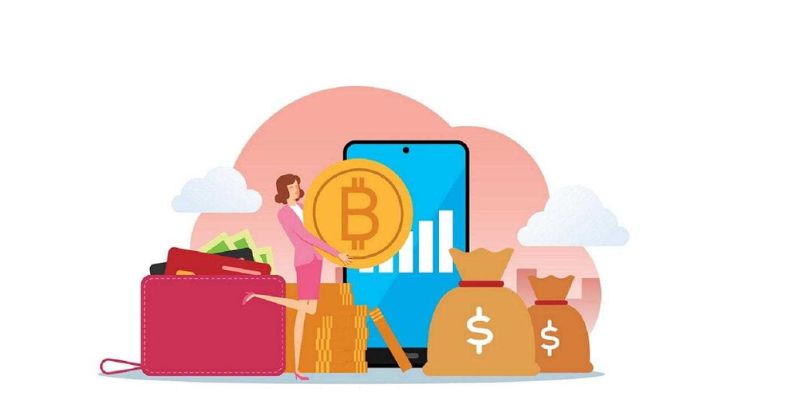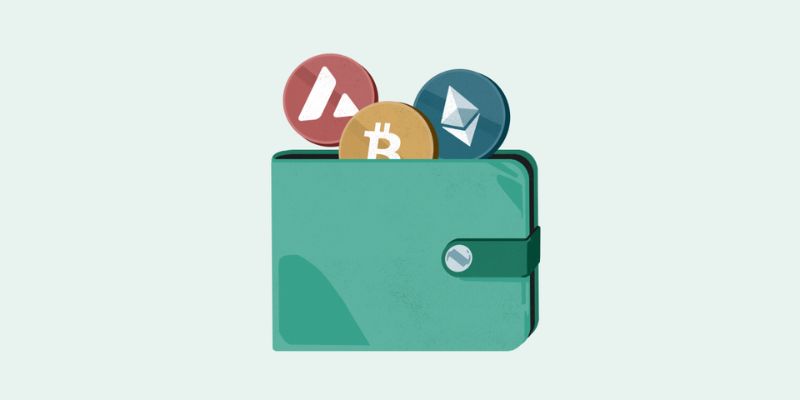Venturing into the world of cryptocurrencies can be as thrilling as it is bewildering, especially when it comes to security. If you’re feeling swamped by the options, fear not. How to choose a secure crypto wallet for beginners needn’t be a daunting task. With this beginner’s blueprint, I’ll walk you through the essentials, ensuring your digital treasure stays safe and sound. From grasping the basics of crypto wallets to evaluating key features and making an informed choice between hardware and software, I’ve got you covered. Let’s make your journey into cryptocurrency both exciting and secure.
Understanding Crypto Wallet Basics for Beginners
The Crucial Role of Private and Public Keys
Imagine your crypto wallet is like a mailbox. The public key is like your mailing address. Anyone can send mail, or in this case, crypto. But only you, with the right key, can open it. That key is your private key. It should stay with you and only you. It’s a secret code that lets you get to your crypto and send it to others. Always keep your private key safe. That means away from peeping eyes and online thieves.
Types of Wallets: Hot vs. Cold Storage
Now, we dive into wallet types — called hot and cold storage. A hot wallet connects to the internet. Think of it as your pocket wallet. It’s easy to reach, great for daily use. Hot wallets are apps on phones or computers. But since they’re online, they’re at more risk. Hackers could try to break in.
A cold wallet keeps your crypto off the web. It’s like a safe in your home. You use it for treasures that you don’t touch often. These come as hardware or paper wallets. They are the safer pick. They keep hackers away by staying offline. But, they are not as quick to use as hot wallets.
Choosing between a hot wallet and a cold one depends on how you use your crypto. If you make lots of trades, a hot wallet’s speed helps. For saving up, a cold wallet’s safety is best. A mix of both could also work well. Use hot wallets for small amounts and cold wallets for the bigger stash.
A beginner’s guide to crypto wallets will tell you: your pick should fit your needs. Think about what you’ll do with your crypto. Then, pick a wallet that fits you. Just like shoes for running or boots for hiking. Each has its use. Remember, selecting a cryptocurrency wallet is key to keeping your digital coins safe. It’s also smart to have more than one way to get to your money. That’s where backup solutions for crypto wallets come in.
For starters, keep your trade needs low in hot wallets. Put your big crypto savings in cold wallets. It’s like not walking around with loads of cash. Instead, you keep most at home, where it’s safer. Hardware wallets for new users are a good cold storage option. They’re like USB devices that hold your crypto.
To wrap it up, remember these points:
- Keep your private keys secret.
- Use cold wallets for saving.
- Use hot wallets for daily trades.
- Have backups ready.
- Pick a wallet that fits your crypto life.
Beginners, welcome to the world of crypto. Let’s keep your coins secure and your trades smart!
Evaluating Features Essential for Secure Wallets
Encryption and Security Protocols
When selecting a cryptocurrency wallet, first ensure it has strong encryption. Encryption scrambles your wallet data, so only you can make sense of it. It turns simple info into complex codes. Think of it as a lock only you have the key to. Many great wallets use what’s called ‘AES encryption’. This is a tough code even smart hackers can’t easily crack.
Adding to this, some wallets offer two-factor authentication (2FA). This step requires a second password or code to access your wallet. Usually, this second key gets sent to a device you own; making your wallet even safer. You should get a wallet that supports 2FA.
The Imperative of Backup Solutions and Recovery Options
It’s crucial to have backup and recovery options. Imagine if you lost access to your computer or phone. Without a backup, you could lose your crypto. Thus, having a backup is like having a spare key to your house. You need a plan B to keep your digital money safe.
A recovery phrase is that plan B. It’s a list of words given when you first set up your wallet. These words let you get back into your wallet if you lose access. Write them down, and store them like a treasure map. Without this map, you’re at risk of losing your crypto forever.
Always pick a wallet that lets you create a backup and gives you a recovery phrase. This way, you can always retrieve your crypto, even if something goes wrong. Remember, securing your investment means planning for the what-ifs, and these features are your safety net.
Choosing Between Wallet Types: Hardware or Software?
Hardware Wallets: An Introduction for New Users
When you’re new to crypto, picking a wallet can be tricky. Think of a hardware wallet like a safe. It holds your digital money offline. This means it’s hard for hackers to get to it. They are small devices, easy to use, and you can plug them into a computer. But they cost money to buy.
Hardware wallets keep your coins safe even if your computer is at risk. They ask for your pin, and each time you plug them in, they keep your private keys secure. Private keys are like the secret codes that unlock your crypto. If anyone else gets them, they can take your coins. So, keeping them safe is key.
They also back up your wallet with a recovery phrase. This is a list of words that lets you access your coins if you lose the device. Write these words down and keep them somewhere safe. If you lose them, you might lose your crypto forever.
Check out different brands, and read reviews to choose a good one. Look for ones with a screen. This shows info on the device so it’s harder for hackers to mess with it. Trustworthy brands are important. They have been tested and have good reviews from many users.
Navigating Software Wallet Safety and Multi-Currency Support
Software wallets are apps for your phone or programs for your computer. They are free but not as safe as hardware wallets. Hackers can attack your phone or computer. So you need to be careful. Use strong passwords and turn on two-factor authentication. This adds an extra step when you log in, which helps keep bad guys out.
These wallets hold many kinds of crypto, which is handy. But that also means you need to be extra safe. They often update to fix bugs and protect you better, so always keep your wallet updated to the latest version.
When choosing a software wallet, see if it supports the coins you want. Some wallets let you swap one crypto for another right inside the app. That’s a nice feature.
Like with hardware, software wallets give you a seed phrase. Again, keep it safe. If your phone or computer gets lost or breaks, this phrase is the only way to get back your coins.
Remember, your wallet is like your bank. You wouldn’t pick a bank without checking it out first. So take your time. Read up on wallets. Ask friends what they use. And always go with what feels safest for you.
In the end, picking a secure crypto wallet means looking at how you plan to use your crypto. Will you use it a lot? Maybe a software wallet makes sense. Will you save it for a long time? A hardware wallet might be best. Take your time, learn the basics, and choose what’s best for you.
Best Practices in Crypto Wallet Management
Understanding the Differences: Custodial vs. Non-Custodial Wallets
Picking a crypto wallet? Think about who holds the keys. With a custodial wallet, a third party keeps your keys safe. This means you trust someone else to secure your crypto. Easy to use? Yes. But you depend on their security. If they mess up, you could lose your coins.
Non-custodial wallets are the other choice. Here, you’re the boss—total control of your keys, and thus your coins. But with great power comes great responsibility. You must guard your keys. Lose them, and your crypto is gone. Smart tip? Pick non-custodial for control, custodial for ease.
Security Practices for Updating and Maintaining Your Wallet
A secure wallet needs updates and upkeep. Just like a car, ignoring it can lead to problems. First off, always back up your wallet. If your device dies, the backup’s your safety net. With every update your wallet gets, you should update. But be careful! Only use official sites for updates.
For more safety, add two-factor authentication (2FA). It’s like a double lock. Even if someone gets your password, they need another key. Plus, keep an eye out for signs of scams. Using a wallet from a good brand can also help. They build trust through quality.
Encrypt your wallet too. It turns your info into a secret code, which stops thieves cold. Another tip? Use a hardware wallet if you can. It’s the safest way to stash your coins. They’re offline, so hackers can’t touch them. Still, pick a good brand. It counts.
Keeping your wallet safe isn’t hard. It’s about making the right choices and sticking to them. Remember, staying updated, backing up, and using 2FA are keys to a secure wallet. Choose what fits you—custodial for simple and easy, non-custodial for full control. Be smart, stay safe!
Crypto wallets can seem tough to get, but they’re key for your coins. We chatted about keys that open and lock your wallet and types like hot and cold storage. You learned that safe wallets need strong code and a backup plan. Picking between hardware or software wallets depends on what you need. Lastly, we talked about custodial versus non-custodial wallets and keeping your wallet up to date. Always think of safety first and pick the right wallet for you. Stay smart, keep learning, and manage your digital money like a pro.
Q&A :
What are the key factors to consider when selecting a secure crypto wallet for beginners?
When beginners are choosing a secure crypto wallet, several key factors should be taken into account. These include the type of wallet (software, hardware, or paper), the reputation of the wallet provider, the level of security features (such as two-factor authentication and multi-signature options), user-friendliness, and customer support. Additionally, it’s important to ensure the wallet supports the cryptocurrencies you are interested in and has a track record of consistent updates and security improvements.
How does a hardware wallet provide additional security for cryptocurrency users?
A hardware wallet, often considered one of the most secure types of wallets for cryptocurrency, provides additional security by storing the user’s private keys offline on a physical device. This protects the keys against online hacking attempts, phishing sites, and malware. Since transactions must be physically confirmed on the device itself, it drastically reduces the risk of unauthorized access to funds, even if connected to a compromised computer.
What are the risks of using an online crypto wallet, and how can beginners mitigate these risks?
Online or ‘hot’ wallets are constantly connected to the internet, making them more vulnerable to cyber-attacks, phishing scams, and unauthorized access. Beginners can mitigate these risks by using wallets from reputable companies, enabling all available security features (like two-factor authentication), keeping the software up-to-date, using strong and unique passwords, and being vigilant against suspicious activities. For additional security, it is advised to store significant amounts of cryptocurrencies in ‘cold’ storage options like hardware wallets.
Can newcomers use multi-signature wallets, and how do they enhance security?
Yes, newcomers can use multi-signature wallets, which require multiple private keys to authorize a cryptocurrency transaction. This feature enhances security by distributing the risk between multiple devices or individuals. Even if one key is compromised, the funds remain secure as unauthorized users would need access to the other keys. Multi-signature wallets can be a good choice for beginners looking to improve their security, especially if they are diligent in maintaining the confidentiality and safety of their keys.
What should beginners know about backup options for cryptocurrency wallets?
Backup options are crucial for recovering funds if a wallet is lost, damaged, or hacked. Beginners should know that most wallets offer a seed phrase, typically a series of 12 to 24 words that can be used to restore a wallet’s contents. This seed phrase should be written down and stored securely, away from potential physical or digital threats. Experts recommend using a secure physical medium like metal for durability and storing it in a safe or a safety deposit box. Regular backups and understanding the restoration process are also essential for maintaining access to funds.





